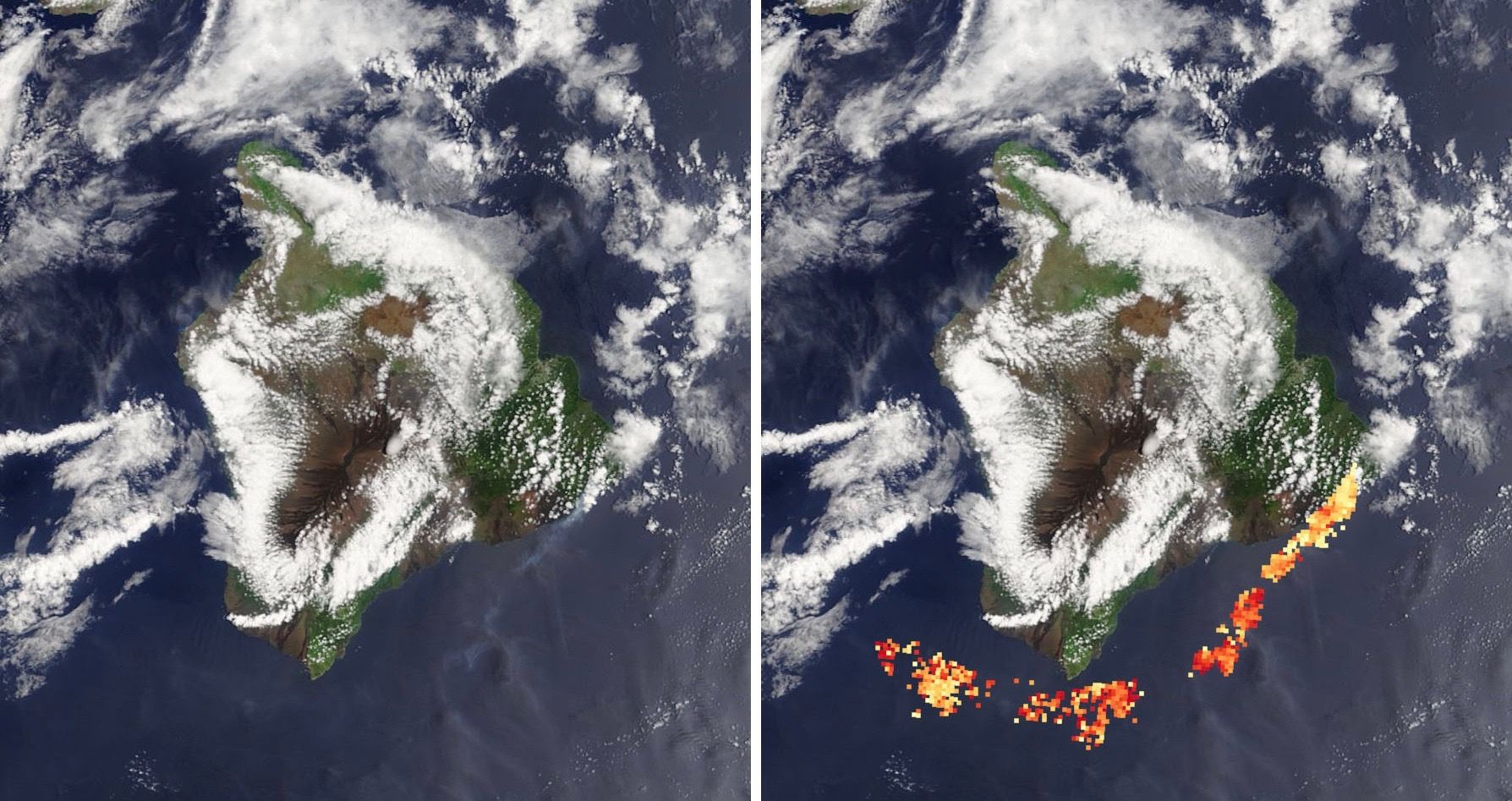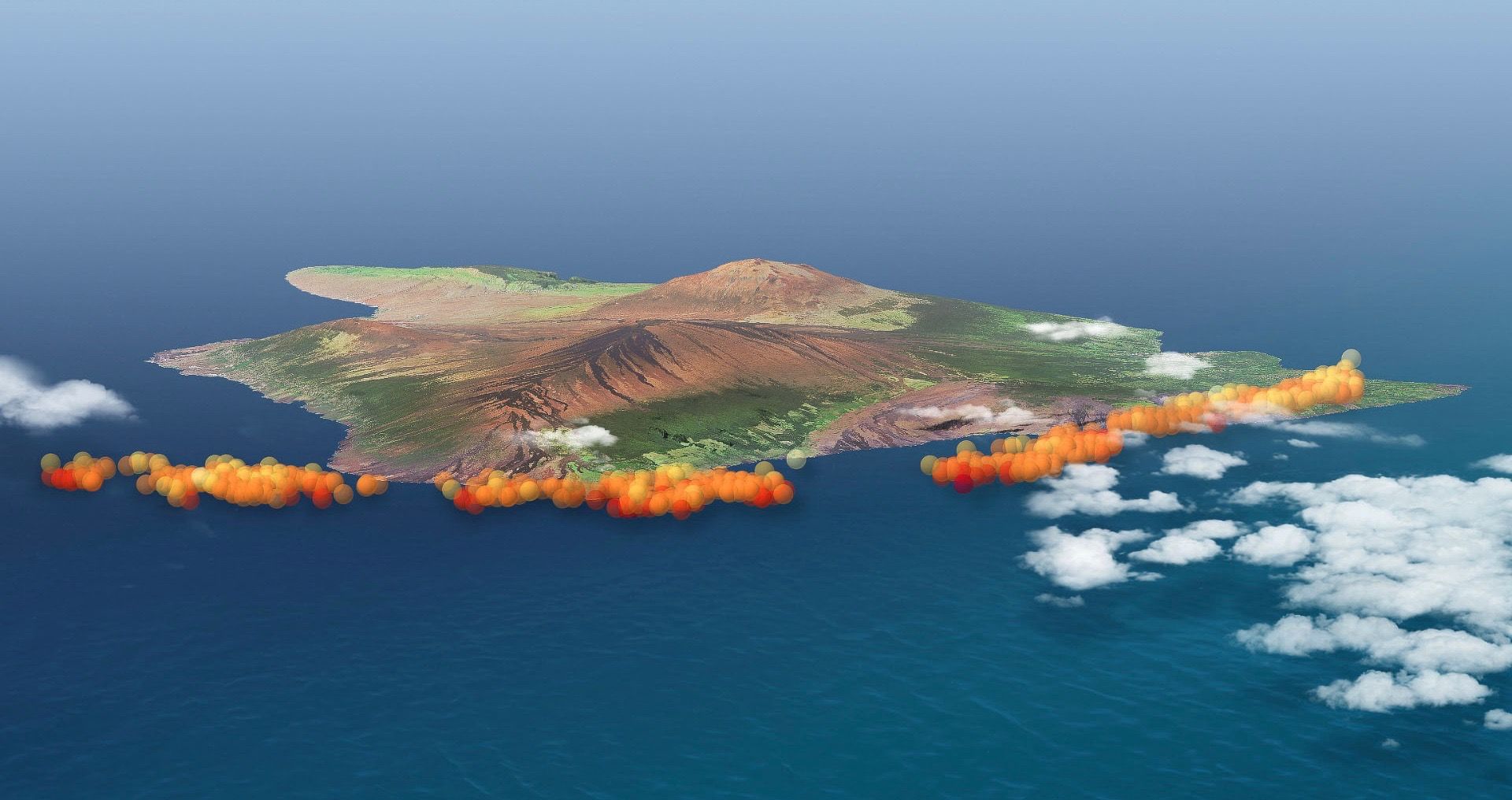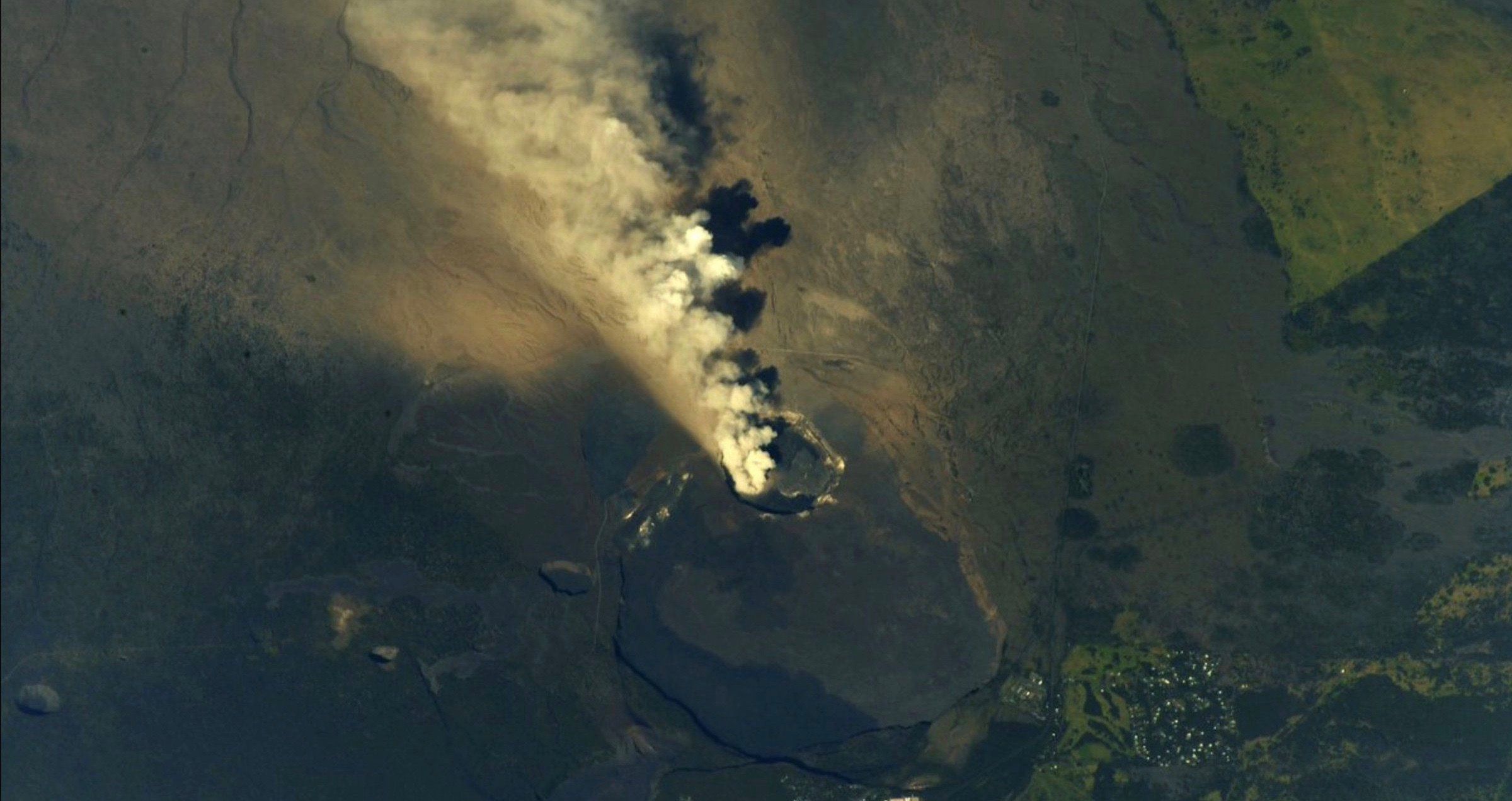NASA has revealed new images of the ongoing eruption of Hawaii's Kilauea volcano, which has destroyed numerous homes and forced more than 1,800 locals to evacuate the surrounding areas. The photos taken by NASA’s Terra satellite illustrate fissures along the volcano's East Rift Zone that are emitting lava and sulfur dioxide.
The first photo shows yellow-looking fissures with the vegetation shown in red and older lava flows in black and gray. The second photo displays long plumes of sulfur dioxide, which can cause skin and mucous membranes irritations. These are shown in yellow and green streaks.
"These photos are helpful to scientists, civil authorities, and the public in order to get the full picture of where new lava is flowing and where toxic gases are moving," said Kayla Iacovino, a volcanologist at Arizona State University in Tempe.
They also allow experts to foresee the locations of future lava flows and gas plumes, she said, "these images can also aid in the creation of new volcanic hazard maps, which help the public make informed choices about where to build (or buy) a new home."
Kilauea, which is located on the southeastern side of Hawaii's Big Island, is one of the most active volcanoes in the world. On April 30, the floor of Kilauea’s crater started to cave in, giving rise to earthquakes, including one that registered a magnitude of 6.9, and lava rose into a new underground, eventually breaking through the surface.
Kilauea is the youngest and southeastern-most volcano on the island, and one of the world’s most active volcanoes. Scientists still do not know why the crater collapsed and the magma drained from the system, though according to volcanologist Wendy Stovall of the U.S. Geological Survey, "Either there's an increase in magma supply, or something blocked the system, something blocked the pathway out of the system."
As magma reaches the surface, increased sulfur dioxide is released into the atmosphere. "The process is similar to what happens when a bottle of soda is opened," Ashley Davies, a volcanologist at NASA's Jet Propulsion Laboratory. "The bubbles of sulfur dioxide and other volatiles, including water and carbon dioxide, begin to rise through the liquid magma and concentrate in the magma closest to the surface, so the first lava to erupt is often the most volatile-rich. There's usually an increase in sulfur dioxide output right before lava reaches the surface, as the gas escapes from the ascending magma."
The Terra satellite, launched in 1999, circles the Earth at 438 miles above the surface of the planet. It records volcanic activity, crop stress, coral reef degradation, glacier retreats, and other environmental catastrophes. In the past, Terra has offered images of the destruction caused by a severe wildfires in California's Napa Valley in 2017.



